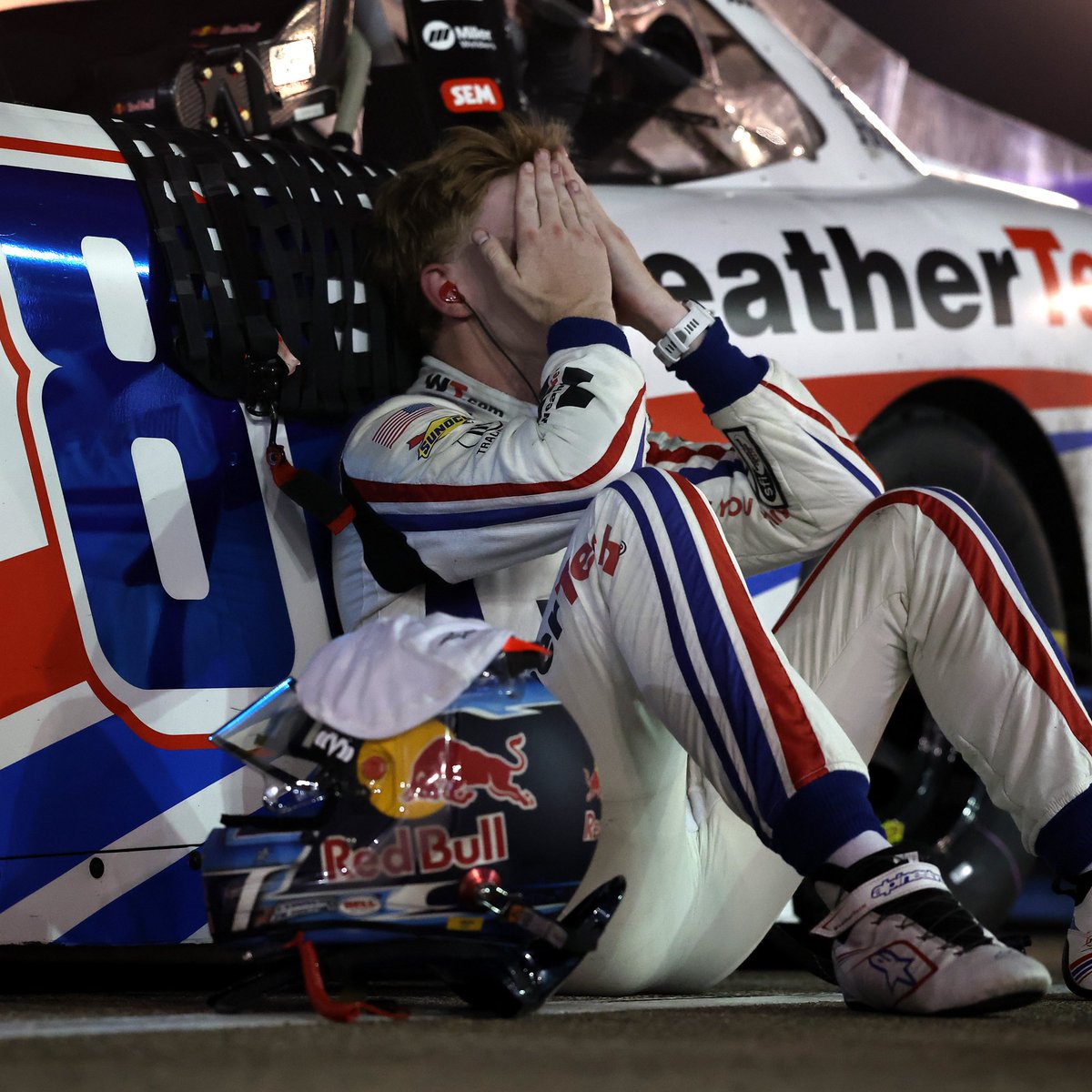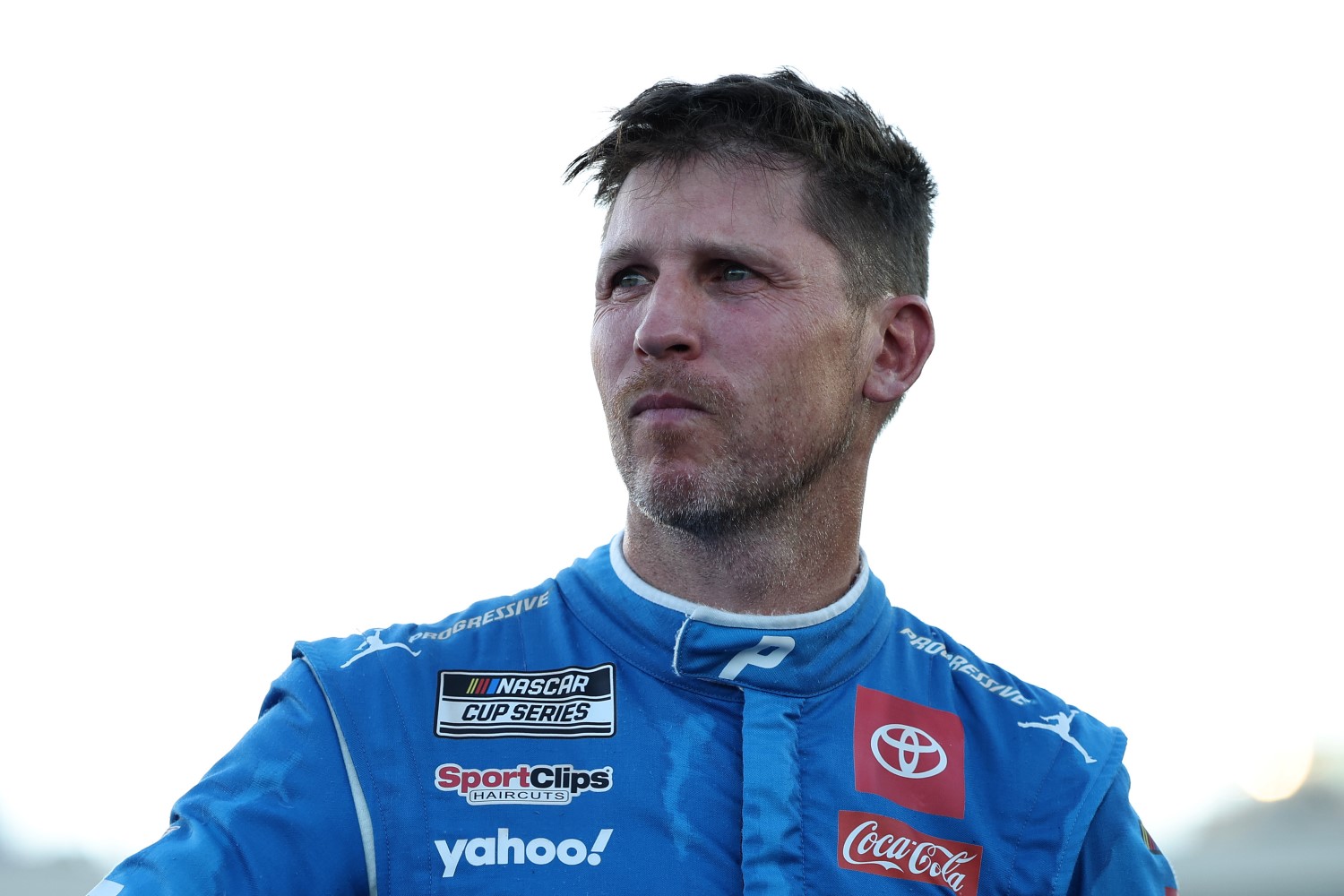NASCAR News: Both Zilisch and Hamlin Got Shafted by NASCAR’s Playoff System
The desert sun beat down on Phoenix Raceway like a cruel judge’s gavel, casting long shadows over the 1-mile oval where dreams were supposed to be forged in steel and speed. It was the weekend of reckoning for NASCAR’s two biggest series, spanning November 1 and 2, 2025.
–by Mark Cipolloni–
In the Xfinity Series on Saturday night, rookie sensation Connor Zilisch had torn through the season like a comet—10 wins, the most of anyone, a top-5 finish in 60% of the races, a resume that screamed champion.
Up in the Cup Series on Sunday, veteran Denny Hamlin was chasing the ghost of championships past, his fifth win of the year at Gateway just one notch in a belt of dominance that included clinching his spot in the final four with a victory at Las Vegas.
Both men entered their respective finales as the architects of their series’ narratives, the drivers who’d carried the torch of excellence through 33 grueling weekends. But NASCAR’s playoff system—a Byzantine elimination bracket culminating in this winner-take-all shootout—had other plans. In the end, it wasn’t skill or strategy that decided the crowns. It was chaos, timing, and a format so unforgiving it turned titans into footnotes.
Connor Zilisch’s story was the stuff of underdog legends turned bitter irony. At just 19, the kid from Charlotte had burst onto the Xfinity scene like he’d been born with a wrench in one hand and a helmet in the other. His No. 88 Chevy had been untouchable: poles at Daytona, a sweep at Charlotte, a blistering performance at New Hampshire. Ten victories by the time the playoffs rolled around, more than double what his closest rival could claim.
He wasn’t just winning; he was redefining dominance, lapping the field in points when the regular season wrapped. Fans whispered about him as the next big thing, a prodigy who could bridge the gap to Cup stardom faster than anyone before.
But the playoffs? That’s where NASCAR’s house many times wins. The format, born in 2014 as “The Chase” and evolved into this playoff purgatory, rewards survival over supremacy. Zilisch advanced through the rounds unscathed, but a freak back injury from a crash at Texas sidelined him for a race, nearly derailing his title hopes before the finale. He clawed back, qualified third in points among the final four, and rolled into Phoenix on November 1 with fire in his eyes. The race started like a coronation: Zilisch sliced through the pack early, taking the lead on lap 45 and holding it through the first stage break. His car was a scalpel, carving clean lines while others wrestled with traffic and tire wear.
Then came the heartbreak, scripted by the gods of one-race roulette. With 50 laps to go, his best friend and fiercest rival, Jesse Love, in the No. 2 Richard Childress Racing entry, made his move. Love, who’d won just two races all year, slingshotted past on a fresh set of tires during a poorly timed caution. Zilisch fought back, closing to within a car length, but Love pulled away, crossing the line 1.808 seconds ahead to snag the checkered flag and the championship. Zilisch rolled across in third, his season’s masterpiece reduced to a runner-up trophy that felt like fool’s gold. “It’s tough,” he said post-race, voice cracking over the team radio static. “We did everything right all year. One bad restart, one yellow flag… and poof. Gone.”

The very next day, upstairs in the Cup grandstands, the air was thicker with regret. Denny Hamlin, the 44-year-old maestro of Joe Gibbs Racing, had been here before—three times in the final four, zero rings to show for it. 2025 was supposed to be different. He’d started the season hot, with wins that silenced doubters who’d called him washed after a winless 2024.
By playoffs’ end, he’d led more laps than any title contender in history, his No. 11 Toyota a metronome of precision. From the pole at Phoenix on November 2, Hamlin owned the night: 208 laps led, a fastest lap record in the books, stages one and two locked down like a vault. The crowd chanted his name as he pitted under green with 30 laps left, emerging with a gap he could drive a semi through.
Enter the villain of the piece: a late caution on lap 309, sparked by a blown right-side Goodyear tire on William Byron’s No. 24 Chevy that sent him spinning into the wall in turn four with just three laps remaining. Hamlin had pitted just prior for four fresh tires, a strategic call to ensure grip for the run home, but it dropped him to 11th on the ensuing restart—trapped behind drivers who’d opted for just two tires to gain track position.
The yellow bunched the field, erasing Hamlin’s lead and handing the restart to chaos in overtime. Ryan Blaney, the Penske powerhouse starting from the front row on fresher rubber up top, pounced to steal the race win after just two green-flag laps. Hamlin charged hard, slicing through the pack to finish sixth, but it wasn’t enough. Despute leading zero laps, Kyle Larson, the Hendrick hotshot who’d advanced to the final four on points, methodically climbed to third—enough to clinch the championship. Hamlin came up agonizingly short, needing just one more lap to overtake for the points lead and the title.
Hamlin climbed from his car numb, the firesuit clinging like a shroud. “In this moment, I never want to race a car again,” he muttered to the media swarm, eyes hollow. It was his rawest admission yet, a veteran gutted by a system that prizes spectacle over substance. “We led two-thirds of the race. Set the pace. And one yellow flag? That’s it. Done.”

The parallels were poetic in their cruelty. Zilisch, the wunderkind with 10 checkers; Hamlin, the grizzled pro with laps led for days. Both architects of seasons that should have etched their names in stone. Instead, NASCAR’s playoff lottery—criticized for years as “awful” and amplifying an “all-or-nothing vibe” that punishes consistency—struck again.
Fans erupted online, hashtags like #FixThePlayoffs trending into the night, echoing calls from insiders for a return to season-long points or a multi-race finale. Even Jordan Bianchi, the sharp-tongued analyst, fired back at detractors: “It was awful… but this is what we’ve got.”
As the haulers rumbled out of Phoenix under a starlit sky on Sunday night, Zilisch and Hamlin shared a quiet moment in the garage shadows—mentee and mentor, bound by the same betrayal. “One race,” Zilisch said, shaking his head. “So much can go wrong.” Hamlin clapped a hand on his shoulder, the weight of unwon titles heavy between them. “Kid, that’s the lunacy of it. But we’ll be back. We have to be.”
In the annals of NASCAR, 2025 would be remembered not for the champions crowned, but for the kings dethroned by a flip of the script. Zilisch and Hamlin didn’t just lose a race; they exposed the cracks in a crown jewel sport. And until the playoff format crumbles under its own flawed weight, the desert winds of Phoenix will whisper their names—a cautionary tale of dominance denied.
